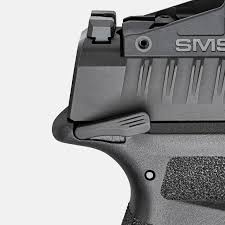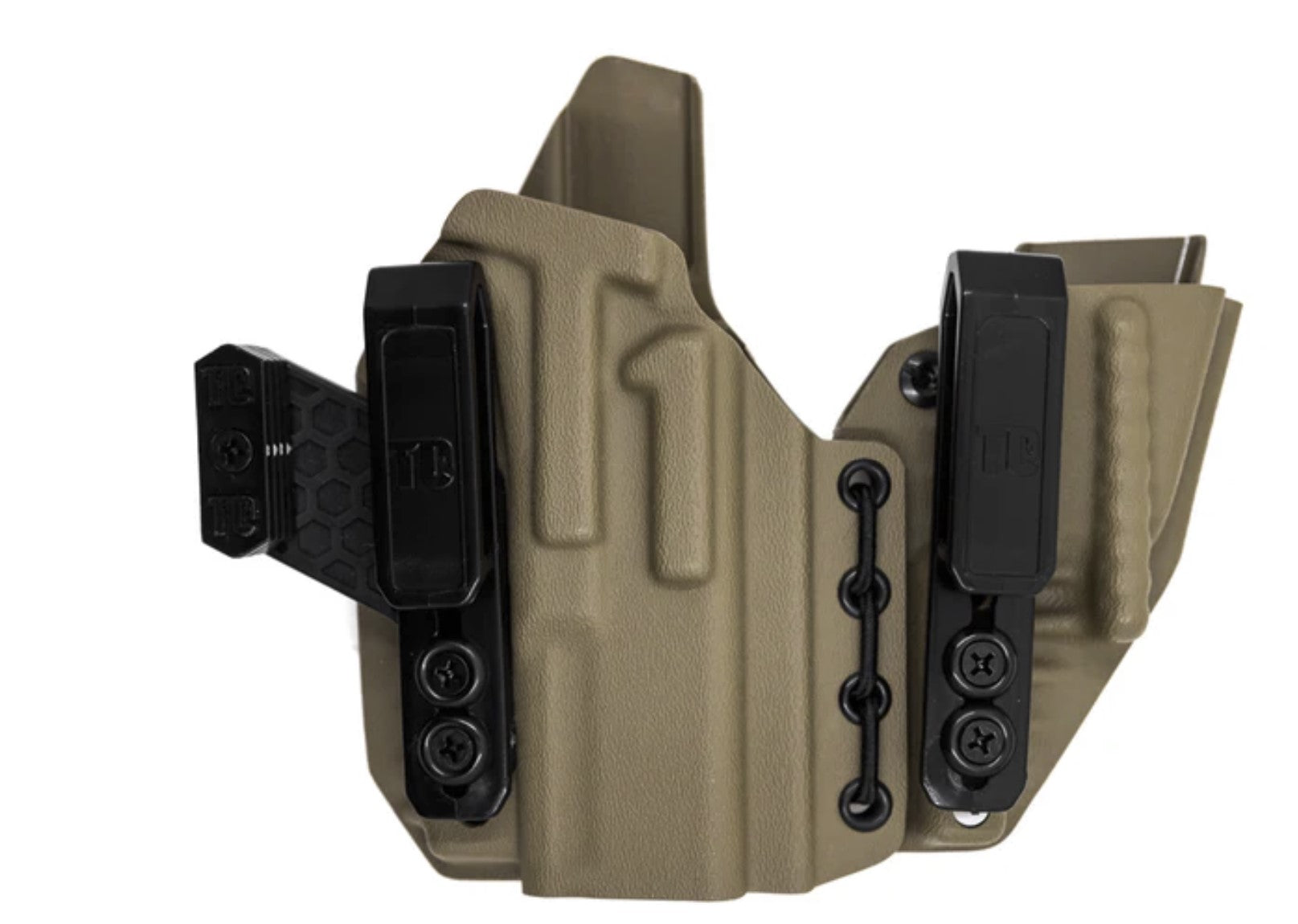Choosing the right concealed carry firearm is a highly personal decision, and one of the most critical features to consider is whether or not to opt for a gun with a manual safety. While there is a lot of debate on this subject, manual safety features provide an added layer of control for many concealed carriers, especially those who value the extra precaution when carrying a loaded firearm.
1. Detailed Assessments of Concealed Carry Guns Equipped with Manual Safety Features
Manual safeties are designed to add an extra step in preventing accidental discharge. For concealed carry, this additional control can be a crucial consideration depending on your lifestyle, training level, and comfort. Let’s take a closer look at some of the most common aspects of guns equipped with manual safety features:
-
Safety: A manual safety is an extra line of defense to prevent accidental discharge, particularly for those new to carrying. This feature may offer peace of mind for individuals who are concerned about the possibility of a negligent discharge, such as when re-holstering or during daily activities. However, it is critical to develop muscle memory to disengage the safety quickly in a high-stress situation.
-
Usability: The usability of a manual safety depends largely on its design and positioning. Thumb-operated safeties, for example, should be easy to engage or disengage with minimal effort and without shifting your grip. Many modern firearms feature ambidextrous safeties, which adds versatility for both right and left-handed users.
-
Reliability: Reliability in a concealed carry gun is paramount, and the inclusion of a manual safety must not compromise this. Firearms with well-designed manual safeties will still provide smooth operation without the risk of the safety mechanism inadvertently engaging or disengaging. It’s important that the safety be tested thoroughly in different scenarios to ensure it operates consistently.
2. Comparison Guide on Different Handgun Options with Manual Safety
When selecting a handgun for concealed carry with a manual safety, it’s important to consider ergonomics, ease of use, and suitability. Below is a comparison of some popular options:
| Handgun Model | Ergonomics | Ease of Use | Suitability for Concealed Carry |
|---|---|---|---|
| Smith & Wesson M&P Shield | Compact with good grip texture, thumb safety is easy to operate | Safety lever is low-profile and intuitive | Excellent for everyday concealed carry, slim design |
| Sig Sauer P365 with Safety | Compact and highly ergonomic, natural thumb placement | Ambidextrous manual safety, easy to engage/disengage | One of the most popular for concealed carry, lightweight |
| Ruger LC9s | Slim and easily concealable, but safety is small | Requires deliberate effort to disengage, preventing accidental deactivation | Ideal for pocket carry or IWB, very lightweight |
| Beretta PX4 Storm Compact | Comfortable grip with a rotating barrel for recoil management | Safety can also serve as a decocker, which may be a pro or con depending on preference | Larger for concealed carry, but manageable with the right holster setup |
| Springfield XD-S Mod.2 | Narrow grip, good fit for small to medium hands | Manual thumb safety, well-placed but firm to prevent accidental activation | Thin, easy to conceal, particularly suited for IWB carry |
3. Recommendations on the Best Concealed Carry Guns with Manual Safety
-
Sig Sauer P365 with Manual Safety: This is an excellent choice for concealed carry enthusiasts who want a lightweight, reliable gun with a well-placed manual safety. The P365 is known for its capacity (10+1 or 12+1) while maintaining a small profile, making it a top contender for everyday carry.
-
Smith & Wesson M&P Shield: The M&P Shield with a manual safety is a popular choice due to its balance between size, weight, and ease of concealment. It offers a familiar safety mechanism that is easy to manipulate without being obtrusive.
-
Ruger LC9s: If you are looking for something extremely slim and lightweight, the Ruger LC9s with a manual safety is worth considering. Its compact size makes it perfect for those who prefer pocket carry or a minimalist inside-the-waistband (IWB) setup.
4. The Importance of Manual Safety Features in Concealed Carry Firearms
The debate over whether to choose a firearm with a manual safety for concealed carry largely comes down to personal preference and training. Here are a few considerations:
-
Preventing Negligent Discharges: Manual safeties provide an extra level of assurance that the firearm will not go off accidentally. This is particularly important if you carry with a round in the chamber or are concerned about re-holstering safely.
-
Training and Muscle Memory: Incorporating a manual safety into your concealed carry setup means training to ensure that disengaging the safety becomes an automatic part of your draw stroke. Many who choose a firearm with manual safety practice repeatedly to ensure they can disengage the safety quickly without added thought.
-
Handling: A manual safety may also provide extra security when handling your firearm, such as during reholstering. If you carry in an appendix position (AIWB), this extra step can provide additional peace of mind.
5. Real-World Feedback and Experiences from Users of Concealed Carry Guns with Manual Safety Features
To provide a more complete perspective, we gathered some real-world feedback from those who carry guns with manual safeties:
-
Peace of Mind for New Carriers: Many new concealed carriers report that having a manual safety helps them feel more comfortable when carrying a round in the chamber. They appreciate the extra step that prevents the gun from firing unintentionally.
-
Training is Key: Several experienced carriers emphasized the importance of training. One user noted, "At first, I found myself forgetting to disengage the safety under stress, but after focused practice, it's become second nature. If you go the manual safety route, train until it’s muscle memory."
-
Diverse Preferences: There is no one-size-fits-all. A user of the Smith & Wesson M&P Shield mentioned, "I like the idea of being able to carry safely with a round in the chamber, but without worrying too much when reholstering—especially if I’m in a crowded area."
-
Balancing Speed and Safety: Some users mention that disengaging a manual safety can add a fraction of a second to their draw time. "It’s a trade-off," said one user, "but for me, the safety feature is worth the added peace of mind, as long as I practice enough."
Conclusion
Choosing a concealed carry firearm with a manual safety is a decision that comes down to balancing safety, comfort, and training. Manual safeties can provide an added layer of security, which may be especially valuable for new carriers or those concerned about preventing accidental discharges. It’s crucial to train extensively with your chosen firearm to ensure you can quickly and effectively disengage the safety in a high-pressure situation.
Ultimately, the decision will vary based on personal preference, experience level, and how comfortable you are with your firearm. Whichever route you choose, remember that regular training, proper holstering practices, and a clear understanding of your firearm's functions are key to safe and effective concealed carry.
For more tips on concealed carry and firearm safety, be sure to check out our other articles on How to Choose the Right Holster for Concealed Carry and Best Concealed Carry Practices for Beginners.
Disclaimer: Always adhere to local laws regarding concealed carry and seek professional training before carrying a firearm.



